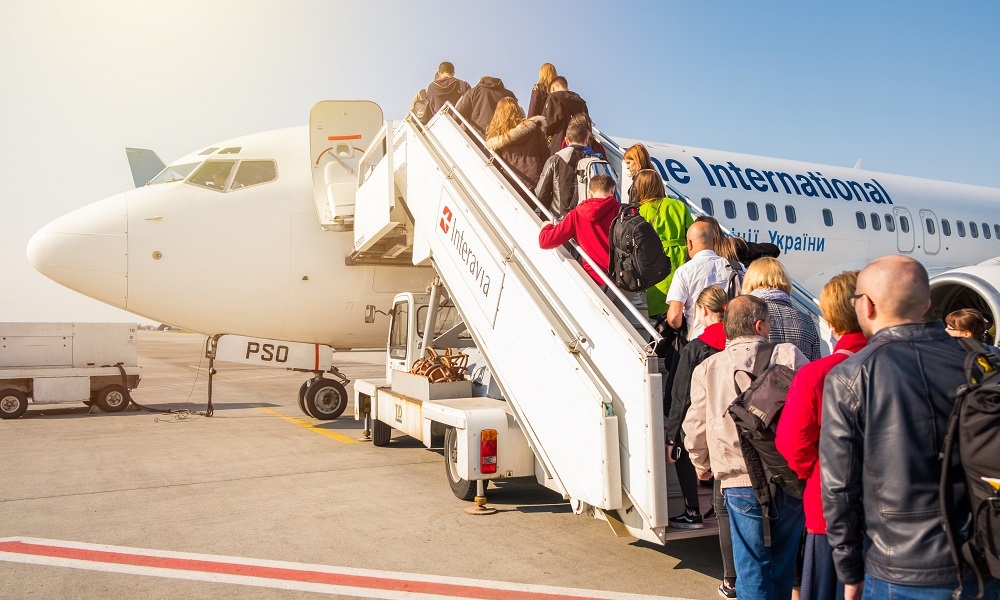When you think about the last time you travelled on an airplane, did you wonder whether there could be a more efficient way of getting passengers on and off the aircraft?
It is this question that was considered by participants in the 2022 International Mathematical Modeling Challenge (IM2C), who worked in teams of up to four students to develop a mathematical model to determine the most time effective way for boarding and disembarking a plane.
IM2C is an annual challenge designed to give secondary school students an opportunity to solve a real-world problem using mathematical modelling. Last year teams were asked to determine the Greatest of All Time (GOAT) of women’s tennis in 2018, and of any individual sport of their choice. In 2020, teams were asked to identify which items would likely be most popular during a store’s sale event.
Under the guidance of their team advisor (typically a teacher), teams have up to five consecutive days to consider the problem posed, create a solution by developing and testing a mathematical model, and write a report for submission to the judging panel.
The challenge is coordinated in Australia by the Australian Council for Educational Research (ACER). This year saw 93 teams from 25 schools submit a report for national judging. At the international judging round completed this month, teams from New Zealand, Thailand and the USA were recognised as Outstanding Teams.
Recognising student achievement
The highest honours in the Australian round of judging were given to a team of students in their last year of high school from Bray Park High School in Queensland (Outstanding Achievement) and a team of students in Year 10, 11 and 12 from Caulfield Grammar School in Victoria (Meritorious Achievement).
‘These students thrive on mathematical problems and this accolade is the highlight of their final year of secondary school,’ Stephanie Lurie, Gifted and Highly Able Coordinator at Bray Park High School, tells Teacher. Lurie was the team advisor for the challenge and says some of the team’s members have participated in the challenge before.
‘I remembered seeing a promo about IM2C [in 2019]. I found resources on ACER’s website and set up a team of students… to work through past problems and information about mathematical modelling. They worked on that every Wednesday afternoon for a semester. The following year, the team submitted a report for the 2020 IM2C and became National Finalists,’ Lurie shares.
‘That recognition boosted their confidence and they were determined to achieve a Meritorious Achievement … [In 2022] the team surpassed their goal… with an Outstanding Achievement. After three years, it was a wonderfully proud moment to see the hard work and dedication of these students recognised in such a significant way.’
Introducing mathematical modelling to students
‘Throughout Year 11, [the students’] Senior Maths teachers encouraged and challenged them to go beyond the required content,’ Lurie shares. ‘The assignments the students are required to do – Problem-Solving and Modelling Tasks (PSMTs) – complement the principles of IM2C perfectly.’
At Caulfield Grammar School, multiple teams were enrolled with students from Year 8 all the way up to Year 12 getting involved. For some students, this was the first time they had engaged in real-world mathematical modelling, team advisor Chris McCarty shares with Teacher.
The Learning Area Leader for Year 7 to 9 Mathematics says an important part of their Maths program is defining various Mathematics aspects with students, including mathematical modelling.
‘We set about a couple of years ago trying to define those particular things and I'm sure our definitions are different to some other schools as well. But the way that we define modelling is that there are lots of possible correct answers, like [with] boarding an aeroplane. There's not just one particular answer, whereas a lot of the kids are used to problem solving where they've got to find the answer.’
‘Some students found [mathematical modelling] a bit daunting and overwhelming because it's such a big problem that they didn't know where to start. Other students found that really engaging, that it was so relevant to real life, and enjoyed the problem-solving aspect of coming up with a solution and testing it,’ McCarty shares.
If you’re interested in finding out more about IM2C, visit www.immchallenge.org.au.
In this article, Chris McCarty says it was important to ensure students understood the difference between problem solving and mathematical modelling.
As a mathematics teacher, reflect on whether your students have had opportunities to work on both problem solving and mathematical modelling tasks. How could involvement in external challenges and competitions help challenge students?



